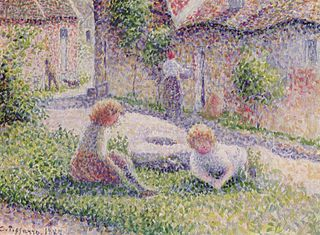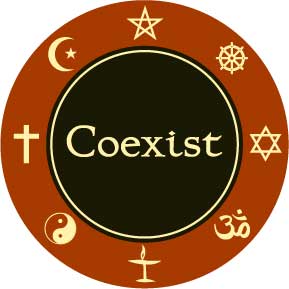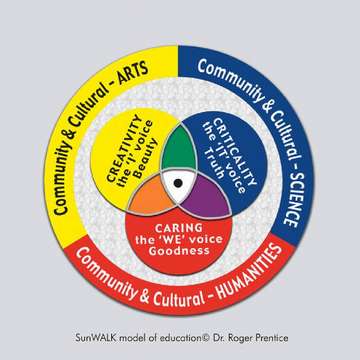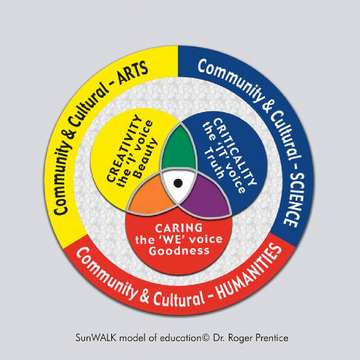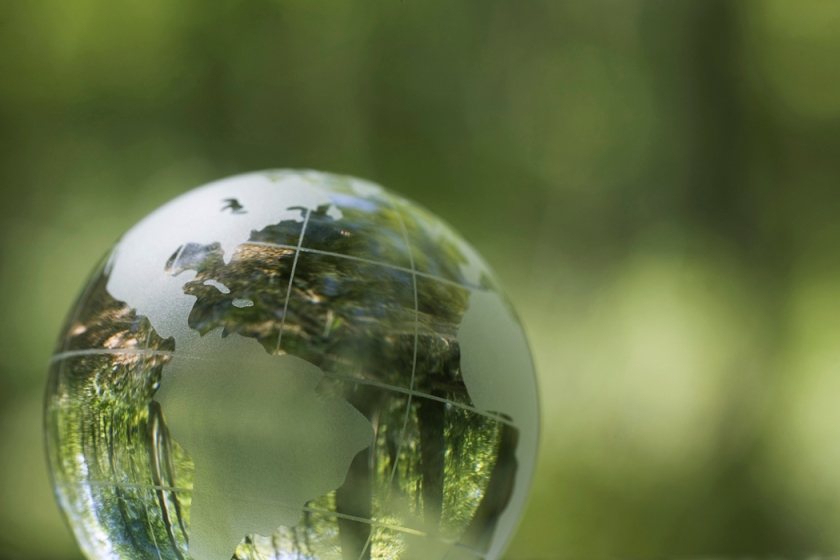
A thoughtful respondent stimulated me in to raising a few more issues re Eckhart Tolle, so here they are.
Is Eckhart Tolle in his teachings anti-intellectual – or at least might he be playing into the hands of anti-intellectualists?
My perspective is from within a Perennial Philosophy and Universalist world-view, as is Wilber and Tolle.
So, in my understanding:-
You said:
‘Tolle does not speak of ‘non-duality as everything’. But he speaks of duality and our relationship to it often.’
The ‘it’ that relates to the non-duality I am arguing is part of the design – not just a deficiency on our part!
Does he celebrate duality as one of the two wings of being human, in this world with others. Or does he say, or imply, that the non-dual is not just desirable but the only goal – to such an extent that a newcomer might think, “I’m not good, I’m not normal, I’m not a true Tolle-ist (God forbid – but I bet it happens) unless I experience complete non-duality 24/7.”
I guess my question is, “Would God’s Creativity have failed if for all humans there was 24/7 non-duality?”
I want to argue that non-duality is the goal and indispensable to unity, peace, stability, conflict-resolution, an end to suffering etc. BUT being in duality is also normal, beautiful, testing, the source of compassion and empathy etc. It is more than just the darkness to the realization of the beauty of light.
I don’t underestimate the collective pain-body and collective insanity that continues to rule our world.
Duality is THE means of all growth and development – up to the need to realize non-duality. It’s the name of the game in this world. My understanding is that babies don’t immediately realize that they are separate beings from their mothers – although the birthing process and daily experiences get that process going pretty quickly!
My point is that although duality is not the goal – it is the means, and a means without which we would neither realize the essentiality of non-duality nor would we have the means to accomplish the realization of it. We have to feel separate to realize at-one-ness. If this is the case then both non-duality and duality are part of the game – and part of God’s great teaching ‘machine’.
So in my view we come to realize that we need (at least in this world) two wings – not one wing and a useless stump! To change metaphors – the purpose of life is for the drop to lose itself in the Ocean – not all the time but sufficiently deeply and sufficiently often to become the conditioning bedrock for all of our living within duality. The dynamic is where knowledge comes from – and duality is not just a design fault or sin!
I have the same problem with an even greater ‘genius’ Ken Wilber. God speaks via duality as well as non-duality, He speaks via subjectivity as well as objectivity AND He speaks via mind and reason as well as their opposites.
A separate, but vitally connected subject concerns the nature of the pain-body and how it relates to mind and thought. The great Tolle also gives the impression that the mind is virtually the same as the pain-body. I would say the the ‘egoic-mind’ = the pain-body – or more accurately the pain-body is the habituated shadow-self created in us via our egoic responses.
He should be ‘condemning’ the egoic-mind not the mind! The mind free of the egoic pain-body = a ray of the Holy Spirit. I don’t think because I’m sinful, I think because I am made in the image of God! Tolle is at risk of giving the mind and thinking a really bad name, whereas they are, when free from the egoic pain-body, first in Creation – the very purpose of Creation.
I have the same problem with (possibly) an even greater ‘genius’ Abraham Joshua Heschel.
You said:
‘When a person is not in the now, it is natural to ask where they should be, because there is an inner sensing that they are not where they belong.’
The ache you refer to is when we haven’t realized that we already have enlightenment, and that it is simply a matter of ‘letting go and let God’. When we have had experiences of non-duality, and re-cognize them and re-alize them, the wood chopping is in the enlightenment and the enlightenment is in the wood chopping!
You said:
‘When you are not in the now, God continues on. Your presence in the now, or not, has no effect on God.’
Yup! The sun shines whether I choose to face it and reflect it or not.
You said:
‘Duality is not ‘not non-being’. Duality is the natural state of the world of form. Seeking an understanding of ‘non-duality’ is not the only thing to do in life, but understanding ‘non-duality’ gives one a profound foundation for all of living.’
Yup! – Beautifully put.
You said:
‘All knowledge comes from consciousness, and you are consciousness. So when you behold, or categorize, the inter-play between duality and non-duality, you, that is consciousness, has created knowledge.’
Ah but what is ‘you’?
For me your term ‘inter-play’ is the key – it indicates the dynamic between experiences of duality and of singleness: me-not me, me and ‘the greater whole of which I and all other phenomena are emanations’ etc.
The explanation that works for me goes like this. I ask of my Spirit a question. My Spirit answers, and lo the light breaks forth. The ‘I’ of course is the egoic self and the Self, ultimately, is God within. But it is more then the pain to which I am addicted – it is God’s Creativity via difference (diversity) – complementary to His/Her/It’s creativity via sameness.
Ultimately I suppose I’m arguing that to deny God’s Creativity in His creation of difference is to deny some aspect of Him/Her/It that cannot be denied. I, and you and him and her and them, are important outside of complete self-abnegation in non-duality! Hooray – vivre la difference – I want dia-logos from you as well as silence, I gratefully acknowledge the dia-logos within me as well as the speechless silence of complete self-abnegation!
The ‘me’ is vital – along with experiences of non-duality – for God to perpetually continue His Creation-emanation. The film projected needs a screen. Every lily of the field is different or unique as well as belonging to the same species.
If you accept the temporary naming of the un-nameable both are part of God’s teaching machine. Difference as well as sameness reveals. The uniqueness as well as the sameness of each of us ‘reveals’ – to us and to others. It is ‘me and non-duality’ that gives rise to development in consciousness, which gives rise to the kind of knowing to which you refer.
This ‘knowing-that-comes-through-raised-consciousness’, comes to us as a ‘gift’ without book-learning and academic study. It is the majority of what we know.
An Islamic (hence Arabic terms) and Bahá’í distinction helps (me) here;
SOURCE: Two words for knowledge, but very different kinds of knowledge. Ilm can be acquired by education and training and through the exercise of reason. Irfan is higher knowledge, or gnosis, that can only be acquired by, first, education, and then contemplation under the guidance of a master. The guidance would include spiritual training in zikr, music (sama) and meditation. Ilm is expected to lead to the sober contemplation of God as both Creator and Judge—his awesome power– whereas irfan may lead to ecstasy as a person is simply overwhelmed by God’s immense beauty and falls in love with that Beauty. SOURCE
The sheer weight of emphases in Tolle might give the impression that mind and thinking = bad. Whereas although the soul is infinite because it is ultimately God, and the mind is finite, the two are essential – from our perspective. Religions can suffer from anti-intellectualism as well as what a friend calls ‘adminology’ in which the essential heart is set aside in favour of jurisprudence and nit-picking.
I am wondering if Tolle, understandably, started from the (to me erroneous) Western view that separates heart and mind, as opposed to the Chinese view of heart-mind – ‘xin’.
I don’t think Tolle is anti-intellectual but I wish he would celebrate a bit more the other wing of being human – duality, without which non-duality would not be.
******
May the Nameless One, who some call God, finish raising up the Self-actualized 2% , the yeast for the bread of humanity!
Maybe He/She/It already has and they are just really badly organized!
“How does the energy generated by Tolle actually get transformed into social action and social transformation?”
Now that’s a really challenging question!
Photo source: Microsoft Clipart

